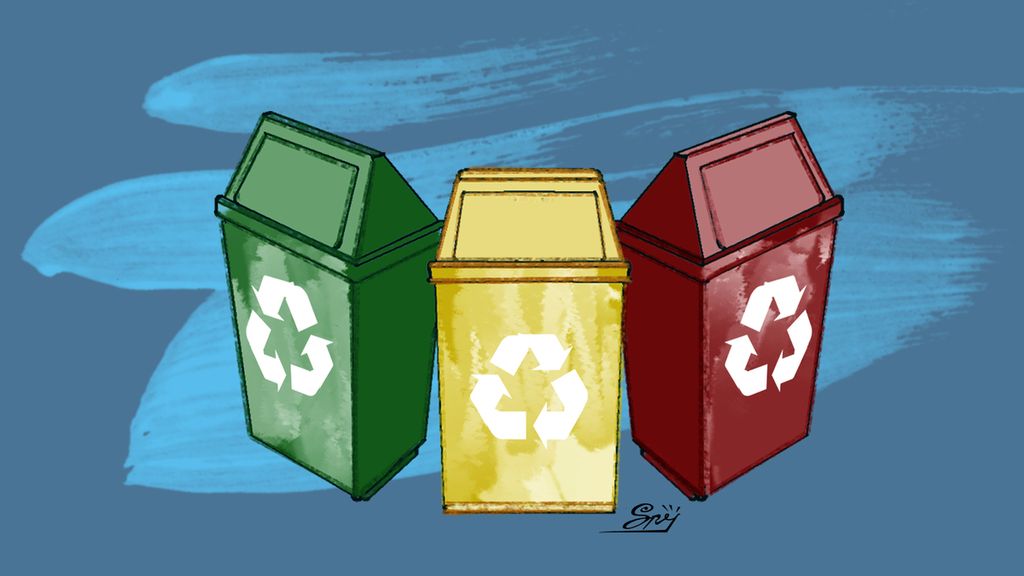Industrial Village
Investments that encourage economic growth and open job opportunities in rural areas must still pay attention to environmental sustainability.

Siwi Nugraheni
Not all villages are synonymous with agriculture. There are also many villages with the industrial sector as the economic support of its citizens. Factories located in villages also mostly employ local people.
Building a factory requires a large area. Limited land in urban areas leads to the opening of factories in rural areas. If not managed properly, industry in rural areas can trigger excessive loss of productive green land and become a source of environmental pollution.
The data issued by the National Land Agency (BPN) show the rate of transfer of rice fields to non-rice fields continues to increase. In the 1990s, 30,000 hectares of rice fields were converted into built-up areas a year, most of them into industrial and residential areas.
In 2011, the conversion of the rice fields increased to 110,000 ha per year, and in 2019 it further rose to 150,000 ha a year. Indeed, there are regulations that require the opening of new rice fields to replace the converted rice fields. However, the new rice fields could not replace all the converted rice fields. The total area of rice fields is shrinking.
Also read:
> Rural-Urban Economic Relations
> Rural Areas and Financial Inclusion
In addition, the new rice fields were almost always created in green areas (forests for example), which have ecological functions, among others as water reserves, carbon absorbers and oxygen producers.
The conversion of the green land into built-up land eliminates those functions and potentially causes problems, including the potential for landslides, floods in the rainy season and drought in the dry season, as well as rising air temperatures in the region.
Transferring the function of technically irrigated rice fields into built-up areas is also a waste. Irrigation channels and infrastructure were built, and later the rice fields that received water from the irrigation channels changed their function to industrial or residential areas. Investment in agricultural infrastructure is wasted.
The synergy between the central and regional governments needs to be strengthened so the land function map does not always change.
One of the government's efforts to stop the rate of transfer of agricultural land functions is to designate sustainable food agricultural land (LP2B). However, the authority to decide on the change of land functions is in the hands of the regional government.
The synergy between the central and regional governments needs to be strengthened so the land function map does not always change.
Factories located in rural areas can also be a source of environmental pollution. One of my students researched the environmental costs of water pollution in a village. Since the establishment of the textile factory in the village, the people can no longer use the ground water. In addition to smelling, ground water also causes itching. Residents had to buy water to meet their needs.
Pollution problem

Despite incurring additional costs due to their groundwater being contaminated by factory waste, the residents did not protest. Some villagers depend on the company for their livelihood. Their bargaining position is low. Losses due to pollution confront their needs for jobs provided by factories that are sources of pollution.
Even if local residents protest, solving the pollution problem is not always easy. We can listen to the case of pollution by a used tire factory in a village in Kendal. Since its establishment in 2008, the factory has troubled the people living in the vicinity. The air, water and soil where they live are polluted. Some families even had to evacuate because they could not stand the air pollution from the factory.
If you search, the news about the local people's protest has been there since 2015. However, until 2023, I still read the news about it in the newspaper. There is an effect of a tug of war between "investment exposure" and the impact of environmental damage caused by the investment.
Also read:
> Stimulating the Financial Industry
Not only large factories, small companies can also be a source of pollution in the village. Tofu factories, tanneries and cloth-printing factories, for example, dump their waste directly into the river. Small enterprises, mostly with investments, do not have enough budget to process waste.
Building a wastewater treatment plant (WWTP) is costly. However, it cannot be used as the reason to sacrifice the environment by polluting it because the impact will be reversed on the quality of human life. There should be a solution. For example, the provision of WWTP facilities that can be used together or waste that can be processed into new products. Residents of tofu-producing villages, such as Kebon Jati village in Sumedang or Sambak village in Magelang, succeeded in processing tofu waste from their production into biogas.
Not only large factories, small companies can also be a source of pollution in the village.
In fact, Indonesia has long had a mechanism to reduce the environmental impact of physical development or a policy. Environmental impact analysis (AMDAL) and strategic environmental studies (KLHS) are instruments that, if done correctly, can prevent environmental damage and spatial changes, ensuring the ecological system functions properly.
Investment is necessary, including investment in the industrial sector. However, investments that encourage economic growth and open job opportunities in rural areas must still pay attention to environmental sustainability. Environmental assessment before a project or policy is rolled out, such as AMDAL or KLHS, should not be seen as an investment inhibitor, but rather as a complement so that economic activities do not cause adverse impacts on nature and the environment.
Quoting Gunter Pauli, author of the book and initiator of the Blue Economy, nature is man's friend, not a victim of unlimited exploitation.
SIWI NUGRAHENI, lecturer at the School of Economics, Parahyangan Catholic University.
(This article was translated by Hendarsyah Tarmizi)